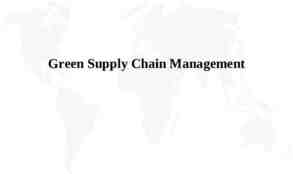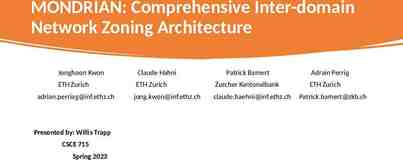Security Level: Introduction to CMMI 27/ 11/ 2017 Huawei Türkiye ArGe
36 Slides3.49 MB
Security Level: Introduction to CMMI 27/ 11/ 2017 Huawei Türkiye ArGe Merkezi Yasemin Yiğit Kuru, [email protected] Deniz Gungor, [email protected]
Introduction to CMMI CMMI (Capability Maturity Model Integration) is a proven industry framework to improve product quality and development efficiency for both hardware and software CMMI is an acronym for Capability Maturity Model Integration. – Sponsored by US Department of Defence in cooperation with Carnegie Mellon University and the Software Engineering Institute (SEI) 2
What is CMMI? Approach used by organizations TO IMPROVE. CMMI is a collection of BEST PRACTICES. – Over 100 organizations formally assisted in its development, including NASA, Motorola, Ericcson The CMMI describes WHAT to do, not HOW to do it. Organizations need to determine How to apply the best practices of the CMMI to how the organization works in order to improve how stuff gets done. There is a wide range of freedom in how an organization decides to embrace the CMMI. You can – – Go slow or fast – Choose the areas you need to focus on – Choose the appraisal mode you are comfortable with (SCAMPI A,B,C, High Maturity) 3
CMMI History “Characterizing the Software Process: A Maturity Framework” “Managing the Software Process” Watts Humprey Watts Humphrey, IEEE Software 1987 1989 1990 Key Practices of the Capability Maturity Model for Software v1.0 Key Practices of the Capability Maturity Model for Software v1.1 Weber, et al., CMU/SEI-91-TR-25 Paulk, et al., CMU/SEI-93-TR-25 1991 1993 Software Process Assessment method commercialized Software Capability Evaluation published 1995 System Engineering CMM published (EIA 731) Key Practices of the Capability Maturity Model for Software v1.1 Book Form 1996 CMM-Based Appraisal method published 2000 2002 2006 2010 CMMI V1.0 CMMI V1.1 CMMI V1.2 CMMI V1.3 SW-CMM V2 release delayed for CMMI effort Acquisition CMM published 4
Value of Mature Capabilities Objective: Improve Processes To Develop Better Product 5
Value of Mature Capabilities 6
Advantages and Disadvantages Advantages of CMMI 1. Culture for maintaining Quality in projects starts in the mind of the junior programmers to the senior programmers and project managers 2. Centralized QMS for implementation in projects to ensure uniformity in the documentation which means less learning cycle for new resources, better management of project status and health 3. Incorporation of Software Engineering Best Practices in the Organizations as described in CMMI Model 4. Cost saving in terms of lesser effort due to less defects and less rework 5. This also results in increased Productivity 6. On-Time Deliveries 7. Increased Customer Satisfaction 8. Overall increased Return on Investment Disadvantages of CMMI 9. CMMI-DEV is may not be suitable for every organization. 10.It may add overhead in terms of documentation. 11.May require additional resources and knowledge required in smaller organizations to initiate CMMIbased process improvement. 12.May require a considerable amount of time and effort for implementation. 13.Require a major shift in organizational culture and attitude. 7
How can CMMI help? CMMI provides a way to focus and manage hardware and software development from product inception through deployment and maintenance. Behavioral changes are needed at both management and staff levels. Examples: – Increased personal accountability – Tighter links between Product Management, Development, etc. Initially a lot of investment required – but, if properly managed, we will be more efficient and productive while turning out products with consistently higher quality. 8
Video: CMMI Capabilities 9
Where is CMMi? Malcolm Balridge Award, Deming’s Prize, World Class Quality nt ro l EFQM Assessments d at ks s e c al Ch terv in Balanced Scorecard s tin uo u Co n Process/ Project Metrics Processes CMMI Assessments d ne efi Quality Metrics co Business ISO9001 Audit Projects Project/ Risk Audit Quality Management Levels 10
CMMI Models within the Framework CMMI for Development (CMMI-DEV), v1.3 was released in November 2010. It addresses product and service development processes. CMMI for Acquisition (CMMI-ACQ), v1.3 was released in November 2010. It addresses supply chain management, acquisition, and outsourcing processes in government and industry. CMMI for Services (CMMI-SVC), v1.3 was released in November 2010. It addresses guidance for delivering services within an organization and to external customers. 11
Value of Processes ! Source: SEI 12
Value of Processes ! Source: SEI 13
Value of Processes ! Source: SEI 14
Value of Processes ! Source: SEI 15
16
CMMI Staged Representation - 5 Maturity Levels Level 5 Optimizing Pr oc e ss M at ur ity Level 4 Quantitatively Managed Level 3 Defined Level 2 Managed Level 1 Initial Process performance continually improved through incremental and innovative technological improvements. Processes are controlled using statistical and other quantitative techniques. Processes are well characterized and understood. Processes, standards, procedures, tools, etc. are defined at the organizational (Organization X ) level. Proactive. Processes are planned, documented, performed, monitored, and controlled at the project level. Often reactive. Processes are unpredictable, poorly controlled, reactive. 17
Key Differences btw Levels LEVEL 5 LEVEL 4 LEVEL 3 LEVEL 2 Organizational Continuous Improvement & Performance Management Statistical Analysis & Advanced Project Management with Prediction Organizational Project Management & Quality Management System Basic Project Management at Project level LEVEL 1 No defined process! 18
Staged & Continuous Representation of CMMI Process Areas 19
CMMI Infrastructure 20
Example For the Requirements Management Process Area: An example Goal (required): “Manage Requirements” An example Practice to support the Goal (required): “Maintain bi-directional traceability of requirements” Examples (suggested, but not required) of typical Work Products might be Requirements traceability matrix or Requirements tracking system 21
Generic Goals 22
CMMI Appraisal SCAMPI : Standard CMMI Appraisal Method for Process Improvement SCAMPI appraisals are used to identify strengths and weaknesses of current processes, reveal development/acquisition risks, and determine capability and maturity level ratings. SCAMPI A is the most rigorous method and the only one that can result in a rating SCAMPI B is less formal and requires fewer activities than a SCAMPI A. It helps an organization to understand its progress SCAMPI C is shorter, more flexible, and costs less than SCAMPI A and B appraisals. It is used to provide a quick gap analysis between the organization’s processes and CMMI practices. 23
Huawei CMMI L3&L5 Certification Plan SN 1 CMMI L3 Milestones Training & Exam 2 SDU Adaptation 3 QMS V2 Release 4 Implementation and Review 5 6 Pre Appraisal Final Appraisal Standards SDU Training & Exam All SDUs can customize the PHB & Lifecycle based on HTRDC QMS, and the adaptation must be approved by DC Director and HTRDC EPG. After pilot and updating, QMS will be Officially released in Huawei PDMC 1st Implementation Reviews (Offline) 1st Implementation Reviews (Onsite) 2st Implementation Reviews (Offline) 2st Implementation Reviews (Onsite) 3st Implementation Reviews (Offline) 3st Implementation Reviews (Onsite) Pre Appraisal - Scampi B/C Final Appraisal (SCAMPI-A) Deadline 2014/4/15 Owner EPG 2014/3/31 LM & QA 2014/4/15 EPG 2014/3/31 2014/4/15 2014/5/30 2014/6/15 2014/7/30 2014/8/15 2014/9/15 2014/10/15 LM & QA QAI CMMI L5 24
Huawei Motivation for CMMI Benefits of adopting CMMI: Enable Improved Quality & Efficiency of the deliverables Better Planning & Quantitatively Managing the Project’s. Enabling understanding the current capabilities and leading to Factual based decisions. E2E visibility of Software Development Practices among the stakeholders Ensure Consistency in the Development Practices and Sharing Best Practices and Lesson’s Learnt at Organizational Level Showcase our practices to customers with proven cases and creating confidence. Pioneer in adapting CMMi and Agile Practices and demonstrate HTRDC Maturity. To assure service delivery requirements (schedule, quality & efficiency) of customers Establish competitiveness in the market place 25
CMMI & Agile Friends or Foes ? 26
Agile development How many of you are familiar with it? 27
Agile is Set of Values Individuals and interactions Processes and tools Working software Comprehensive documentation Customer collaboration Contract negotiation Responding to change Following a plan http://www.agilemanifesto.org 28
12 Agile Principles 29
30
CMMI & Agile: Some Myths CMMI is command and Control (Agile is self organizing) CMMI is a heavy weight process (Agile is light / No process) CMMI is a rigid model (Agile is flexible/No model) CMMI is Process Oriented and Agile is People Oriented CMMI expects lots of documents (Agile does not require/produce any document) CMMI is for big projects and Agile is for small projects CMMI and Agile are at odds with each other There is little or no planning in Agile Agile teams have free run – No control You need very experienced team for Agile 31
Addressing to misconceptions CMMI CMMI Heavyweight Process Plan Driven (Not flexible) Focus on Process and Specification Agile Unstructured and unmeasured No defined organizational standard Success relies on people (high risk) Less control (Less measurement) Suitable ONLY for SMALL Heavyweight process/copious documentation not “required” Waterfall not required: Flexible, iterative processes can be applied Focus is delivery of results through formal, measured process Agile Velocity, Burndown Charts, Parking Lot Charts, Delivery Scrum/FDD well defined Success relies on people and process Measured and focused Proven to work across a range of project sizes 32
CMMI and Scrum Productivity Gains Systematic is able to deliver on schedule, cost and quality using 69% effort compared to a CMMI L1. CMMI Level 5 is key to obtaining large contracts It gives high predictability and betterengineered product for scalability, maintainability, adaptability, and reliability. 33
Thank You. Copyright 2016 Huawei Technologies Co., Ltd. All Rights Reserved. The information in this document may contain predictive statements including, without limitation, statements regarding the future financial and operating results, future product portfolio, new technology, etc. There are a number of factors that could cause actual results and developments to differ materially from those expressed or implied in the predictive statements. Therefore, such information is provided for reference purpose only and constitutes neither an offer nor an acceptance. Huawei may change the information at any time without notice.
35
QUIZ 1-Please write the comparison of the CMMI and Agile. (max.3 items) 2-What are the differences between CMMI Maturity and High Maturity? 3- «Agile does not require/produce any document» True / False 4- «There is little or no planning in Agile» True/False 36









































